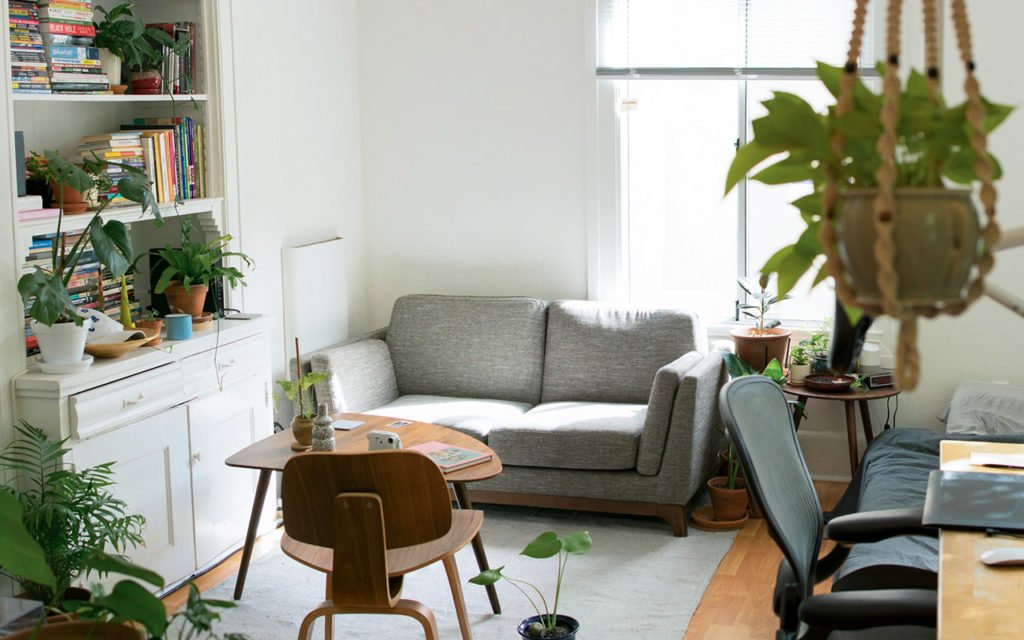
When we think of poor air quality, we often think about outdoor pollution such as lines of traffic on the highway and billowing smokestacks downtown. The average American spends 87% of their life indoors so while we may not consider it an issue, the quality of the air inside our homes and businesses should be just as high of a concern. Read on for ways to improve the indoor air quality in your own indoor environments.
Indoor Air Quality (IAQ) is a measure of the quality of air inside and around structures and buildings, specifically relating to the health and comfort of the people inside the building itself. Poor indoor air quality can negatively impact our health, but there are a lot of things that are within your control to improve or prevent a bad situation.
Read our article on the basics of indoor air quality to learn more about common air pollutants and the signs or indicators that your home or office has bad air quality.
Before diving into the various ways you can improve indoor air quality, there are some options available to help you determine its current quality. You do not want to wait until you, a family member, or a colleague begins having symptoms of Sick Building Syndrome to realize you have a problem. Consider instituting the following as a precautionary measure:
The air monitor and carbon monoxide alarm can be installed for 24/7 ease of mind, while the mold test and radon test should be conducted routinely.
In general, most indoor air quality problems in the home can be solved most effectively through source control.
As a protective and proactive method to lower the concentrations of indoor air pollutants in your home, consider increasing the amount of outdoor air coming indoors. Most home heating and cooling systems do not mechanically bring fresh air into the house except for new advanced systems which are not very common.
Opening windows and doors, operating window or attic fans, or running a window air conditioner with the vent control open increases the outdoor ventilation rate. This is a particularly important step to take while involved in short-term activities that generate high levels of pollutants such as painting, paint stripping, heating with kerosene heaters, cooking, welding, soldering, or sanding.
There exists a great selection of air cleaners on the market, ranging from inexpensive table-top models to sophisticated whole-home systems. Air cleaners will help to remove particles rather than gaseous pollutants. Their effectiveness depends on how well they collect pollutants from indoor air (expressed as an efficiency rate percentage) and how much air it draws through the filtering element (expressed in cubic feet per minute).
Consider investing in an air cleaner to automatically purify the air in your home or business. It’s also beneficial to change your AC and air filters to keep them clean. Be sure to check your air ducts for routine cleaning and maintenance as well.
Rugs and carpets have utility beyond just comfort – they actually act as their own air filter by trapping dust and other particles with their many fibers. If you clean your carpets and rugs weekly, they will continue to work for you by improving the air quality in your home by just lying there.
You may find suggestions out there about having more houseplants to reduce levels of pollutants, but there is currently no evidence that a reasonable number of houseplants remove significant quantities of pollutants in homes and offices.
Contradicting that claim, houseplants can actually be harmful if they are over-watered, because overly damp soil may promote the growth of microorganisms and mold which can affect allergic individuals.
Humid and moist conditions can encourage the growth of mold and mildew in your home. Consider investing in a dehumidifier if you live in an area with especially humid conditions in the summer.
Are you in need of more personalized help or advice for improving air quality in your home? If you are in the Central Pennsylvania area – call WM Buffington! Our team of trained professionals can help through every step in the process and deliver the perfect solution.